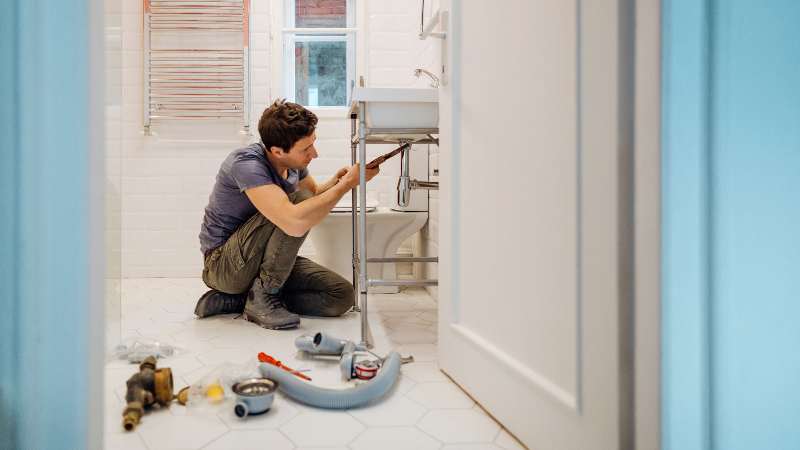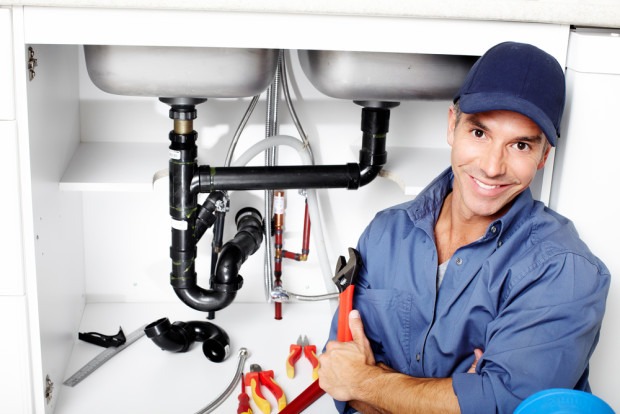Identify & Fix Plumbing Sounds
Identify & Fix Plumbing Sounds
Blog Article
Just how do you really feel in regards to Why Do My Pipes Make Noises?

To detect loud plumbing, it is very important to establish initial whether the undesirable noises happen on the system's inlet side-in various other words, when water is transformed on-or on the drain side. Noises on the inlet side have varied causes: excessive water stress, used shutoff as well as tap parts, incorrectly connected pumps or other appliances, incorrectly positioned pipeline bolts, as well as plumbing runs including too many limited bends or various other constraints. Sounds on the drain side usually stem from poor area or, similar to some inlet side sound, a design containing limited bends.
Hissing
Hissing sound that happens when a faucet is opened slightly usually signals too much water stress. Consult your regional water company if you suspect this trouble; it will certainly be able to inform you the water stress in your area and can mount a pressurereducing shutoff on the incoming water supply pipeline if necessary.
Various Other Inlet Side Noises
Squeaking, squeaking, scratching, breaking, as well as tapping generally are triggered by the expansion or tightening of pipelines, generally copper ones providing warm water. The sounds take place as the pipes slide against loosened fasteners or strike nearby home framing. You can usually identify the location of the trouble if the pipes are exposed; simply follow the audio when the pipes are making noise. Probably you will uncover a loose pipeline hanger or a location where pipelines lie so near to floor joists or various other framing items that they clatter against them. Affixing foam pipe insulation around the pipelines at the point of get in touch with need to fix the problem. Make sure bands as well as wall mounts are safe and supply adequate assistance. Where possible, pipe bolts ought to be connected to massive structural elements such as structure walls rather than to mounting; doing so reduces the transmission of resonances from plumbing to surfaces that can magnify and transfer them. If affixing fasteners to framework is unavoidable, wrap pipelines with insulation or other durable product where they get in touch with bolts, and sandwich the ends of brand-new bolts between rubber washing machines when mounting them.
Dealing with plumbing runs that struggle with flow-restricting limited or countless bends is a last option that must be taken on only after seeking advice from a knowledgeable plumbing professional. Regrettably, this scenario is rather common in older homes that might not have actually been built with indoor plumbing or that have actually seen numerous remodels, especially by amateurs.
Chattering or Shrilling
Extreme chattering or screeching that occurs when a valve or tap is activated, which typically vanishes when the installation is opened fully, signals loose or faulty interior components. The remedy is to replace the shutoff or tap with a new one.
Pumps as well as devices such as cleaning devices as well as dish washers can move motor noise to pipes if they are poorly attached. Link such products to plumbing with plastic or rubber hoses-never stiff pipe-to isolate them.
Drain Sound
On the drain side of plumbing, the chief goals are to get rid of surface areas that can be struck by dropping or hurrying water and also to insulate pipes to include inevitable audios.
In brand-new construction, bathtubs, shower stalls, toilets, as well as wallmounted sinks as well as containers need to be set on or versus resilient underlayments to lower the transmission of audio via them. Water-saving commodes and also taps are much less loud than traditional designs; install them instead of older types even if codes in your area still permit making use of older components.
Drains that do not run up and down to the cellar or that branch into horizontal pipe runs supported at flooring joists or various other mounting present especially problematic noise problems. Such pipelines are huge sufficient to radiate considerable vibration; they additionally lug considerable amounts of water, which makes the situation even worse. In brand-new building, specify cast-iron soil pipelines (the big pipes that drain commodes) if you can manage them. Their massiveness contains a lot of the sound made by water going through them. Likewise, avoid transmitting drains in walls shared with rooms as well as spaces where people collect. Walls containing drains must be soundproofed as was explained previously, using dual panels of sound-insulating fiber board and wallboard. Pipes themselves can be covered with special fiberglass insulation created the function; such pipes have a resistant plastic skin (in some cases having lead). Outcomes are not always sufficient.
Thudding
Thudding sound, frequently accompanied by shivering pipelines, when a faucet or device valve is switched off is a condition called water hammer. The sound as well as vibration are brought on by the reverberating wave of stress in the water, which all of a sudden has no place to go. Often opening a shutoff that discharges water swiftly into an area of piping including a constraint, joint, or tee fitting can generate the very same condition.
Water hammer can generally be treated by mounting fittings called air chambers or shock absorbers in the plumbing to which the trouble valves or taps are connected. These devices enable the shock wave created by the halted flow of water to dissipate in the air they have, which (unlike water) is compressible.
Older plumbing systems may have brief vertical areas of capped pipe behind walls on tap runs for the exact same purpose; these can ultimately loaded with water, lowering or destroying their performance. The cure is to drain pipes the water system entirely by shutting off the primary water supply shutoff and also opening all taps. Then open up the main supply shutoff and close the taps one by one, beginning with the faucet nearest the shutoff and also ending with the one farthest away.
WHY IS MY PLUMBING MAKING SO MUCH NOISE?
This noise indeed sounds like someone is banging a hammer against your pipes! It happens when a faucet is opened, allowed to run for a bit, then quickly shut — causing the rushing water to slam against the shut-off valve.
To remedy this, you’ll need to check and refill your air chamber. Air chambers are filled with — you guessed it — air and help absorb the shock of moving water (that comes to a sudden stop). Over time, these chambers can fill with water, making them less effective.
You’ll want to turn off your home’s water supply, then open ALL faucets (from the bathroom sink to outdoor hose bib) to drain your pipes. Then, turn the water back on and hopefully the noise stops! If you’re still hearing the sound, give us a call to examine further.
Whistles
Whistling sounds can be frustrating, as sometimes the source isn’t easily identified. However, if you can pinpoint which faucet or valve that may be the cause, you’ll likely encounter a worn gasket or washer — an easy fix if you replace the worn parts!Whistling sounds from elsewhere can mean a number of things — from high water pressure to mineral deposits. Your best plan of attack here is to give our plumbing experts a call. We’ll be able to determine where the noise is coming from and what the cause may be, then recommend an effective fix!
Cracks or Ticks
Cracking or ticking typically comes from hot water going through cold, copper pipes. This causes the copper to expand resulting in a cracking or ticking sound. Once the pipes stop expanding, the noise should stop as well.
Pro tip: you may want to lower the temperature of your water heater to see if that helps lessen the sound, or wrapping the pipe in insulation can also help muffle the noise.
Bangs
Bangs typically come from water pressure that’s too high. To test for high water pressure, get a pressure gauge and attach it to your faucet. Water pressure should be no higher than 80 psi (pounds per square inch) and also no lower than 40 psi. If you find a number greater than 80 psi, then you’ve found your problem!
Next step is to give us a call in order to install a pressure regulator. Trust us, you don’t want to wait to resolve this issue. Not only is the sound annoying, but high water pressure can be destructive to your home — including damaging certain appliances, like your washer and dishwasher.
Dripping
You might be accustom to the slow quiet drip your kitchen faucet makes. You might have even tuned out your bathroom sink dripping and drabbing all day long — but it’s time to find its cause.
A slow drip could signify a variety of easy to fix issues, such as a worn out O ring, or loose part. And by ignoring the drip, you could be wasting up to 2,000 gallons of water a year! So start conserving water — get it looked at ASAP.
https://www.pwessig.com/blog/2018/december/why-is-my-plumbing-making-so-much-noise-/

Do you appreciate reading up on Why is My Home Making Strange Plumbing Noises? Try to leave feedback down below. We would be delighted to listen to your thinking about this review. Hoping that you come back again in the future. Kindly take the time to promote this blog posting if you liked it. Thanks for your time. Kindly pay a visit to our website back soon.
Book Today! Report this page